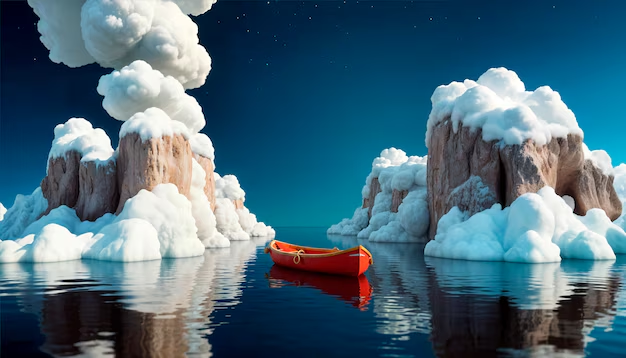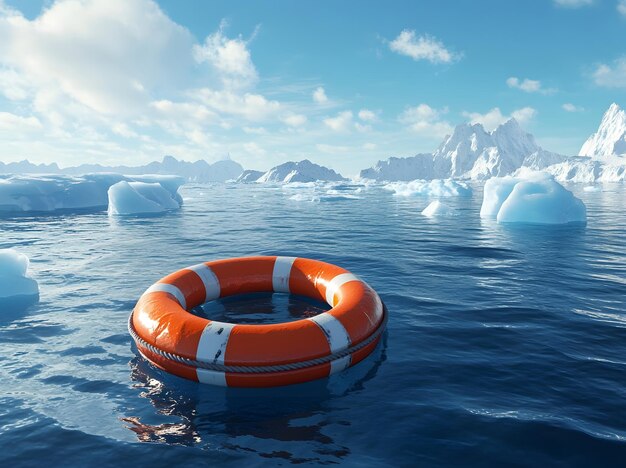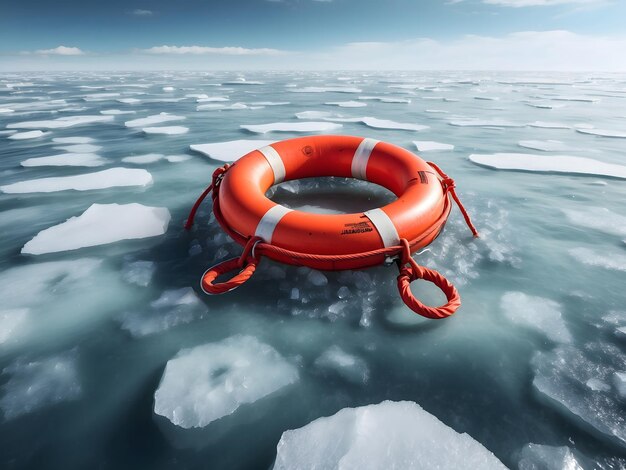The Arctic floater NYT has interested scientists, adventurers, and enthusiasts alike. Modern-day articles, mainly those using the New York Times, have popularized this term, leading to an improved interest in the phenomenon. This complete article delves deep into the hassle of the Arctic floater NYT, uncovering its mysteries, significance, and environmental concerns.
What is an Arctic Floater?
The term “Arctic floater” refers to huge portions of ice that accompany the flow in the Arctic Ocean. These floaters are formed through a complex approach to freezing seawater and breaking off massive ice shelves. Arctic floater NYT articles have highlighted how those ice formations play a critical role within the environment, acting as habitats for numerous marine species and influencing international weather styles.
Formation of Arctic Floaters
The formation of arctic floaters begins with the freezing of seawater. As temperatures plummet sooner or later of the Arctic wintry climate, the ocean’s surface begins to freeze, forming sea ice. Over time, this ice thickens and expands, from time to time breaking off from larger ice cabinets to grow into loose-floating entities. The New York Times has posted numerous in-intensity pieces on how climate change is accelerating these floaters’ melting and formation cycles.
The Role of Climate Change
One of the crucial issue factors mentioned in Arctic floater NYT articles is the effect of weather exchange on those floating ice hundreds. As global temperatures move upward, the Arctic is experiencing terrific melting prices. This reduces the dimensions and variety of floaters and the Arctic environment’s sensitive stability. Melting arctic floaters contribute to rising sea degrees and can have some distance-attaining effects on global climate styles.

Ecological Importance of Arctic Floaters
Arctic floaters are greater than blocks of ice drifting in the ocean; they may be essential components of the Arctic surroundings. Many marine animals, including seals, polar bears, and diverse seabirds, depend on these floaters for survival. The ice offers a platform for searching, resting, and breeding. Moreover, the bottom of arctic floaters serves as a habitat for algae and microorganisms, which form the bottom of the Arctic meal net.
Impact on Marine Life
The decline in arctic floaters, as counseled via the New York Times, poses a significant hazard to marine life. Polar bears, for example, depend on those ice formations to hunt seals. With fewer floaters available, polar bears should travel extra distances to discover meals, which is central to reducing survival fees. Similarly, the discount in ice affects the breeding grounds of seals and the feeding patterns of numerous seabirds.
Scientific Research and Exploration
The Arctic floater NYT insurance has emphasized the importance of clinical studies in statistics of these phenomena. Scientists use superior eras, such as satellite imagery and underwater drones, to examine arctic floaters’ formation, motion, and melting. This study is crucial for predicting destiny changes inside the Arctic surroundings and developing strategies to mitigate the impact of weather exchange.
Challenges in Arctic Exploration
Exploring the Arctic and studying Arctic floaters offers numerous demanding situations. The harsh climate conditions and the distance flung location make it difficult for researchers to conduct discipline studies. Despite those disturbing conditions, scientists have made exquisite strides in their knowledge of the complexities of the Arctic area, as frequently suggested in Arctic floater NYT articles.
Arctic Floaters and Global Climate
The effect of arctic floaters extends beyond the Arctic place. The melting of these ice masses contributes to growing sea degrees, which could cause global flooding of coastal regions. Furthermore, the discount in Arctic ice impacts international weather patterns, the most critical factor in many excessive weather occasions. Arctic floater NYT articles have highlighted the significance of tracking these modifications to comprehend their global implications better.
Mitigation and Conservation Efforts
Given the environmental and climatic significance of Cold floaters, there might be a developing requirement for preservation endeavors. Global collaboration is fundamental in tending to the difficulties presented by the liquefying of Cold ice. Arrangements pointed toward decreasing fossil fuel byproducts and safeguarding the Icy environmental factors are basic for holding the significant ice developments.

The Future of Arctic Floaters
The destiny of arctic floaters remains unsure. While ongoing research gives precious insights into the contemporary-day state of the Arctic, predicting destiny modifications is difficult due to the complicated interactions among various environmental elements. What is plain, however, is that the destiny of these ice hundreds may want to have significant results for all of the Arctic floater NYT surroundings and the worldwide weather.
Public Awareness and Education
Raising public awareness about the significance of Arctic floaters is critical for driving conservation efforts. Media outlets like the New York Times play an essential role in coaching the public about these issues. By highlighting the stressful situations dealing with the Arctic in their Arctic floater NYT articles, they help foster a greater understanding and appreciation of the need for environmental safety.
Conclusion
Arctic floaters are vital to the fitness of the Arctic ecosystem and the stability of worldwide weather systems. As highlighted in Arctic Floater NYT opinions, these ice masses face numerous threats because of the rapid modifications inside the Arctic area. Understanding and shielding Arctic floaters is vital not only for maintaining the Arctic’s particular biodiversity but also for mitigating the broader influences of climate change.
By continuing to investigate and raise awareness about arctic floater NYT, we can better understand their position in our global system and take steps to ensure their upkeep for future generations.

